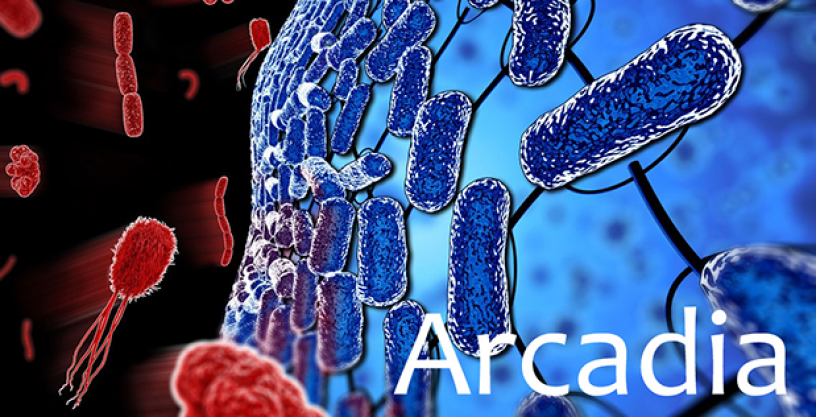
Arcadia program will work with nature to develop “probiotics” for military materials and equipment to prevent corrosion, decrease drag
Sep 14, 2021
Bacteria are the most abundant and diverse lifeform on Earth, coating almost every surface, with the majority spending their lives in biofilms. This lifestyle is universally perceived as problematic since biofilms contribute significantly to equipment degradation, including billions of dollars yearly in DoD assets1 , through corrosion, mold or increased drag2. However, biofilms do not have to be a problem. New insights suggest biofilms could be rendered beneficial by redirecting their composition and structure. Similar to the Arcadian vision of harmony with nature, the DARPA Arcadia program will develop “probiotics” to protect military materials and equipment using naturally occurring microorganisms to generate robust and beneficial coatings.
Forming a stable and functional biofilm can be a balancing act since one is effectively creating a miniature ecosystem that acts like a living paint. Fortunately, recent advances in our understanding of how biofilms form and survive, combined with new tools for bacterial control, could enable the manipulation of a bacterial community toward a desired function. Arcadia will combat DoD asset degradation by generating “materiel probiotics” – biofilms with a beneficial function – via rigorous modeling of species interactions. This will require advances in the modeling of biofilm formation as well as high-speed microfluidic testbeds to grow, track, and test biofilms. Multiple strategies for biofilm generation will be examined, including assembly, where one starts with a single species followed by stepwise additions of new species and displacement, where one starts with a stable community and then displaces a problematic species with a preferred one.
“In FY2016 alone, corrosion cost the DoD over $20 billion1,” stated Dr. Paul Sheehan, Arcadia program manager. “The Arcadia program will focus on biofilm-mediated problems, including corrosion, that are both DoD relevant and tractable, enabling us to build the tools and understanding for biofilm management.”
- Drag on Unmanned Undersea Vehicles (UUVs) /Gliders,
- UUV/Glider Corrosion,
- Fuel-Tank Corrosion, or
- Black Mold Inhibition.
While individual proposals must address only one application track, they must address both Technical Areas (TA1 and TA2), which include: “Modeling & Analysis of Community Interactions” (TA1) and “Engineering a Functional and Resilient Biofilm” (TA2). The technology will be developed over two phases. During Phase I (24 months), performer teams will directly engage with Independent Verification and Validation (IV&V) partners, coordinated by DARPA, who will provide DoD-relevant biofilm samples. Performer teams will then develop high-throughput testbeds to characterize these samples and validate their models. During Phase II (24 months), performer teams will continue direct engagement with IV&V partners for community testing in the real-world. Communities must be stable and exhibit track-associated function after two months in the field.
“The Arcadia program aims to develop functional biofilms that not only inhibit costly microbial-induced corrosion but also can protect against it in the future,” added Sheehan.
Additional details of the program schedule and metrics are available in the broad agency announcement at https://sam.gov/opp/636ef1cc998e4b1299f7cd19b8e4c6db/view.
1. Defense Management: Observations on Changes to the Reporting Structure for DOD's Corrosion Office and Its Implementation of GAO Recommendations. https://www.gao.gov/products/gao-19-513.
2. AFRL Biological Materials and Processing team leader Wendy Goodson, Sept. 21, 2016. https://www.popularmechanics.com/military/research/news/a22960/air-force-plane-eating-bacteria/
# # #
Media with inquiries should contact DARPA Public Affairs at outreach@darpa.mil
Associated images posted on www.darpa.mil and video posted at www.youtube.com/darpatv may be reused according to the terms of the DARPA User Agreement.
Tweet @darpa
